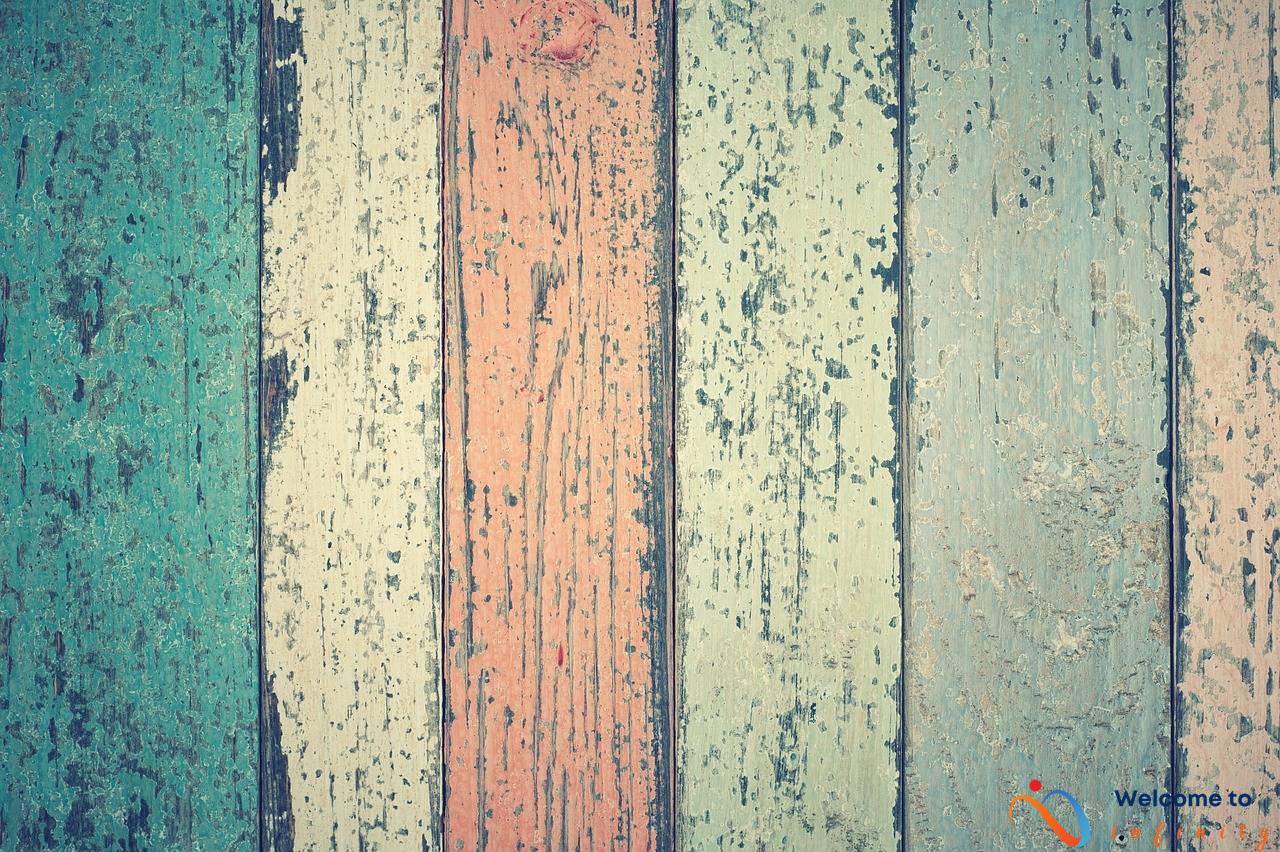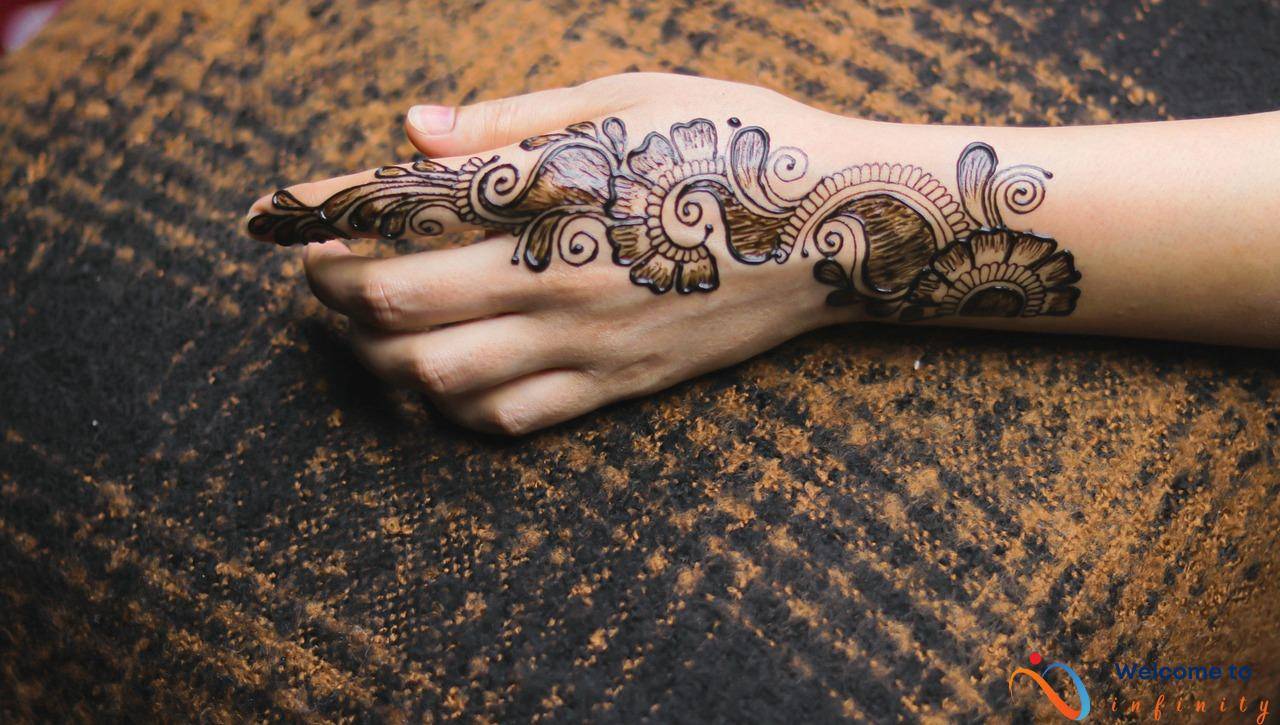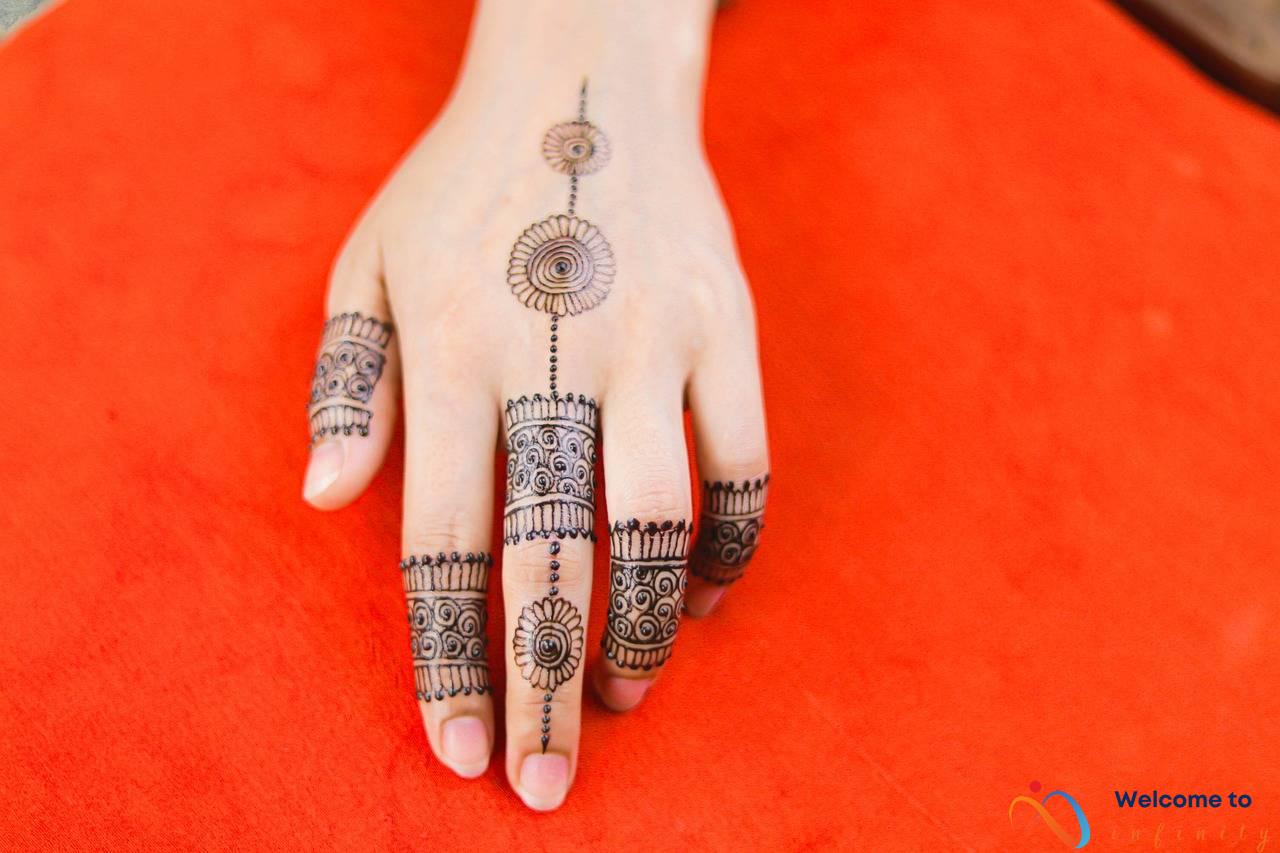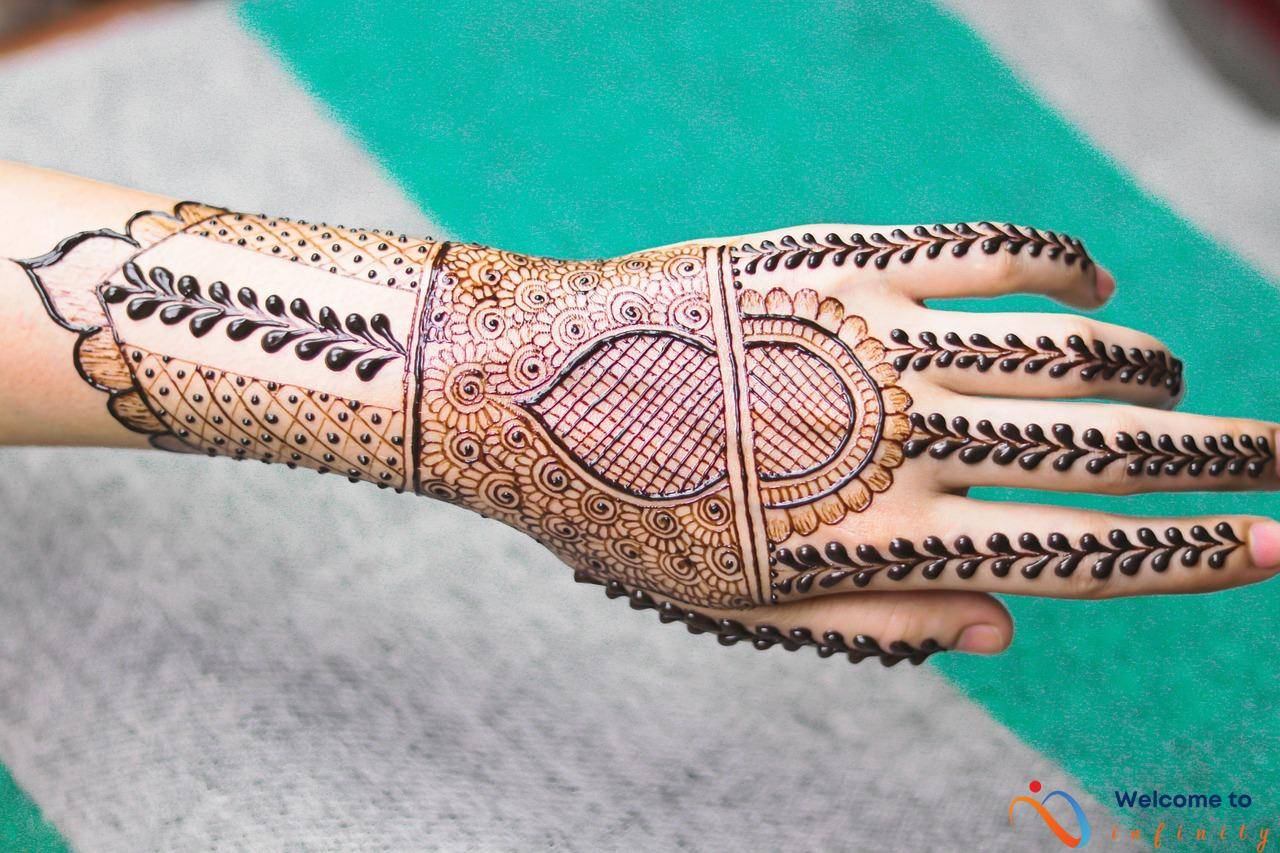If you're looking for a way to incorporate balance and harmony into your daily life, mandala tattoos might be the answer you've been searching for. In recent years, these beautiful and intricate designs have skyrocketed in popularity as more and more people seek to infuse their lives with meaning through art.
The mandala has its roots in Hinduism and Buddhism and is a powerful symbol of the universe and the self. It represents unity, balance, and spiritual enlightenment, making it an ideal choice for those who want to showcase these principles in their own lives.
One of the great things about mandala tattoos is their versatility. They can be designed in any number of ways, incorporating different patterns, shapes, and colors to create a personalized and unique look. Whether you prefer a minimalist design or something more complex and detailed, a skilled tattoo artist can help you bring your vision to life.
The Origins of the Mandala
The mandala is an ancient spiritual symbol that has been used in Hinduism and Buddhism for thousands of years. The word “mandala” comes from the Sanskrit word for circle, and the mandala is often depicted as a concentric circle within a square. The circle represents the universe, while the square represents the self.
Mandalas often feature intricate designs and patterns that are meant to represent the interconnectedness of all things in the universe. They are also used in meditation practices, as focusing on the mandala is believed to help calm the mind and bring about a sense of inner peace.
The origins of the mandala can be traced back to ancient Indian and Nepalese cultures, where they were used in religious rituals and as a way to symbolize the relationship between the self and the divine. Over time, mandalas spread throughout Asia and became an important part of Buddhist and Hindu spiritual practices.
Today, the mandala continues to be used as a spiritual symbol and is also celebrated for its aesthetic beauty. Mandala tattoos are an especially popular way to incorporate this ancient symbol into modern life, as they allow people to carry a reminder of the interconnectedness of all things with them wherever they go.
The Meaning Behind Mandala Tattoos
Mandala tattoos are not only beautiful adornments to the skin, but they also hold great meaning and symbolism. The word “mandala” comes from the Sanskrit word for “circle,” and is a spiritual and ritual symbol in Hinduism and Buddhism that represents the universe and one's psyche. Mandala tattoos are created with intricate patterns and designs, making them a unique and personal expression of the wearer's beliefs and values.
Spirituality is one of the most common meanings behind mandala tattoos. The mandala represents the interconnectedness and harmony of all living beings, and serves as a reminder to stay mindful and present in the moment. The circular shape of the mandala is also believed to facilitate meditation and introspection, making it a powerful tool for spiritual growth and self-discovery.
Balance is another significant element of mandala tattoos. The intricate symmetrical patterns symbolize balance and harmony, reminding us to strive for balance in all aspects of our lives. This could mean balancing work and personal life or balancing one's emotions and thoughts.
Unity is also a common theme in mandala tattoos. The interconnectedness of the pattern represents the unity of all things in the universe. It is a reminder to look beyond differences that may separate us and instead embrace the idea that we are all a part of something larger than ourselves.
Lastly, mandala tattoos are a great way to express creativity. The intricate designs and patterns leave plenty of room for artistic expression and personalization. Each design can be unique, showcasing the individual's creativity and personality.
In conclusion, mandala tattoos have a rich history and deep meaning that goes beyond just being a beautiful design on the skin. They represent spirituality, balance, unity, and creativity, making them a powerful symbol for those who wear them.
The Design Elements of Mandala Tattoos
Mandala tattoos are rich in intricate design elements that make them unique and captivating. Every mandala tattoo design is made up of various geometric patterns, intricate details, and meaningful symbols. These design elements are what make mandala tattoos intricate and mesmerizing. The patterns have a circle as the primary motif, while the rest of the elements are grouped around it. These patterns include circles, triangles, squares, and other geometric figures, making the final design captivating and eye-catching.
In addition to the geometric patterns, mandala tattoos feature intricate details that enhance the beauty of the tattoos. The details are what make each mandala tattoo stand out, as they can be simple or intricately complex. For instance, mandala tattoos can incorporate a wide range of designs like animals, flowers, and more. Every detailed feature has its own meaning, making the entire tattoo unique and deeply symbolic.
Meaningful symbols are another element that makes mandala tattoos appealing. The symbols used in mandala tattoos are believed to have spiritual significance and represent different aspects of life. For instance, the lotus flower symbolizes purity, enlightenment, and self-regeneration. Similarly, the circle symbolizes unity, infinity, and completeness, making it a fundamental design element in mandala tattoos.
Mandala tattoos are not only beautiful in design but also have significant spiritual and cultural meaning. The intricate design elements, including geometric shapes, intricate details, and meaningful symbols, make them a fascinating tattoo choice. These designs remind us of the balance, unity, and creativity we need in our lives. Whether you want to enhance the visual appeal of your body or embrace spiritual meaning, mandala tattoos offer an ideal choice.
The Benefits of Getting a Mandala Tattoo
A mandala tattoo goes beyond being just a piece of art on your body. It can offer a range of benefits that can positively impact your life. Here are some of the benefits of getting a mandala tattoo:
- Promotes balance: The circular and symmetrical design of a mandala helps to promote balance, both in the physical and spiritual sense. It can serve as a reminder to maintain balance in all aspects of life.
- Enhances creativity: The intricate design of a mandala encourages creativity and can inspire you to think outside of the box.
- Provides a sense of unity: The design of a mandala is often inclusive of different elements, colors, and symbols. It can serve as a reminder that we are all connected and part of something bigger than ourselves.
- Promotes relaxation: The repetitive and meditative process of creating or receiving a mandala tattoo can be a relaxing and calming experience.
These benefits can help you to feel more confident and empowered, and to embrace balance, harmony, and creativity in your life.
The Best Places to Get a Mandala Tattoo
If you're considering getting a mandala tattoo, it's important to choose the right location on your body. Mandala tattoos are intricate and detailed, so you'll want to choose a spot that provides enough space for the design to fully unfold. Here are some of the best places to get a mandala tattoo:
A wrist mandala tattoo is a popular choice for those who want a small but meaningful design. The wrist is a great spot for a simple mandala, featuring clean lines and geometric shapes.
Sometimes known as a foot mandala, an ankle mandala tattoo is perfect for those who want a design that can be both hidden and shown off. Symbolizing steadiness and strength, a mandala on your ankle will hold a powerful significance.
A mandala tattoo on your back provides a large and blank canvas for the intricate design. The back mandala tattoo can feature a variety of shapes and patterns, from flower-filled mandalas to geometric patterns.
A chest mandala tattoo can be an intense and deeply personal symbol of strength, unity, and balance. The intricacy of the design can fill the chest, and the mandala tattoo will continue to be a reminder of your strength and resilience.
For those who want a larger mandala tattoo, the upper arm is an excellent spot. The upper arm mandala tattoo can be extensive, detailed, and include elaborate patterns.
Ultimately, the best place for your mandala tattoo will depend on the size and complexity of the design, as well as your personal preference and comfort level. Your tattoo artist can help you determine if a particular spot is right for your mandala design. Be prepared to discuss any concerns or questions you may have about the placement of your mandala tattoo.
The Different Types of Mandala Tattoos
If you are looking to get a mandala tattoo and want to explore different types of designs, you are in luck. Mandala tattoos come in a wide variety of designs, each with its own unique meaning and symbolism. Here are some popular types of mandala tattoos that you might want to consider:
Geometric mandala tattoos are characterized by their intricate patterns and shapes, often featuring repeating geometric shapes like circles, triangles, and squares. These mandalas are often seen as a symbol of perfection and balance, representing the interconnectedness of all things in the universe.
Floral mandala tattoos are popular among those who appreciate the beauty of nature. These mandalas incorporate intricate patterns of flowers, leaves, and vines, often in bright and vibrant colors. The floral design symbolizes growth, purity, and love.
Animal mandala tattoos incorporate animal motifs into the mandala design. These tattoos usually feature intricate designs that are shaped like animals, such as elephants, wolves, or birds. Animal mandalas symbolize strength, protection, and guidance.
There are many other types of mandala tattoos to choose from, including tribal mandalas, traditional mandalas, and watercolor mandalas. Ultimately, the design you choose should reflect your own personal style and resonate with you on a deeper level.
The Mandala Tattooing Process
Getting a mandala tattoo is a beautiful and meaningful experience, but it's important to understand the tattooing process in order to ensure the best possible outcome. The first step in the process is the initial design consultation, where you'll meet with your tattoo artist to discuss your ideas and vision for the mandala tattoo. During this consultation, your artist will work with you to understand your preferences and provide input on the design.
Once the design is finalized, the tattooing session itself can begin. The process can take anywhere from a few hours to several sessions, depending on the size and complexity of the mandala tattoo design. It's important to choose a skilled and experienced tattoo artist who has expertise in mandala tattooing and can create the intricate designs with precision and care. During the tattooing session, your artist will transfer the design onto your skin and use a tattoo machine to create the intricate details and patterns of the mandala tattoo.
After the tattooing session is complete, it's important to take care of the tattooed area to ensure proper healing. Your tattoo artist will give you detailed aftercare instructions, which typically include keeping the area clean and moisturized, avoiding direct sunlight, and avoiding activities that may cause excess sweating or rubbing against the tattooed area.
Overall, getting a mandala tattoo is a beautiful and rewarding experience that requires careful consideration and research. By choosing a skilled tattoo artist, communicating your ideas effectively, and taking proper care of the tattooed area, you can ensure that your mandala tattoo will be a lasting symbol of balance, harmony, and creativity in your life.
Choosing a Skilled and Experienced Tattoo Artist
If you're planning on getting a mandala tattoo, it's crucial to choose a skilled and experienced tattoo artist. Here are some tips on how to find the right artist for you:
- Do your research: It's important to research tattoo artists in your area who specialize in mandala designs. Look for artists with experience and a portfolio that showcases their work. You can also read reviews from past customers to get a sense of their professionalism and skill.
- Ask for recommendations: If you have friends or family members who have gotten mandala tattoos, ask for their recommendations for tattoo artists. They may be able to refer you to someone who is skilled and experienced.
- Visit the studio: Before booking an appointment, visit the tattoo studio to check the cleanliness and overall vibe. A clean and professional studio is a good indication that the artist takes their work seriously.
- Communication is key: When consulting with a potential tattoo artist, make sure they listen to your ideas and preferences. A good artist will be open to your ideas and offer suggestions to create a design that fits your style and personality.
Choosing the right tattoo artist is essential to creating the perfect mandala tattoo. By doing your research, asking for recommendations, visiting the studio, and communicating effectively with the artist, you'll be on your way to having a beautiful and meaningful tattoo.
The Cost of Getting a Mandala Tattoo
If you are considering getting a mandala tattoo, it is important to consider the cost. The price of a mandala tattoo can vary greatly depending on several factors. One of the main factors is the size of the tattoo. The bigger the tattoo, the more time and ink it will require, which can increase the cost.
Another factor that can influence the cost of a mandala tattoo is the complexity of the design. Intricate and detailed designs can take longer to tattoo, which can result in a higher price. The experience level of the tattoo artist can also affect the cost. More experienced tattoo artists may charge more for their services than those who are newer to the industry.
When choosing a tattoo artist for your mandala tattoo, it is important to consider their portfolio and experience level. This can help you determine the quality of their work and whether they are able to create the type of mandala design that you are looking for.
In addition to the initial cost of the tattoo, it is also important to consider the cost of aftercare. Proper aftercare can help ensure that your tattoo heals properly and maintains its bright and vibrant colors. Some tattoo shops may include aftercare products in the price of the tattoo, while others may charge for them separately.
Overall, the cost of a mandala tattoo can vary depending on several factors. By taking the time to research tattoo artists, consider the complexity and size of the design, and factor in the cost of aftercare, you can ensure that you get the best possible tattoo for your budget.
The Long-Term Meaning and Significance of a Mandala Tattoo
Getting a mandala tattoo is more than just a fashion statement, as it holds a deeper meaning and significance that can last a lifetime. For many people, a mandala tattoo serves as a constant reminder to stay balanced, harmonious, and creative in their lives.
A mandala tattoo is more than just a piece of body art, it can represent a spiritual journey or a passage through a significant life event. This type of tattoo can be a meaningful way to commemorate the journey so far and to look forward to what's ahead. It can remind its wearer of their inner strength, self-love, and growth.
A mandala tattoo reflects the complexity of life and the interconnectedness of all things. It symbolizes the cyclical nature of life, death, and rebirth. Every moment becomes part of a continuous flow, as in the mandala's circle that represents wholeness and infinity.
As the years pass, a mandala tattoo can serve as a lifelong reminder of the meaning it held during its creation. It can provide comfort during difficult times and can serve as an inspiration to stay true to oneself. A mandala tattoo reminds its wearer to find balance and harmony in every aspect of life, from work to relationships and self-care.
In conclusion, a mandala tattoo is more than just an image on the skin, it's a symbol of unity, balance, and creativity. As a constant reminder of these values, a mandala tattoo can serve a lifelong purpose and continue to inspire its wearer to live their life to the fullest.









